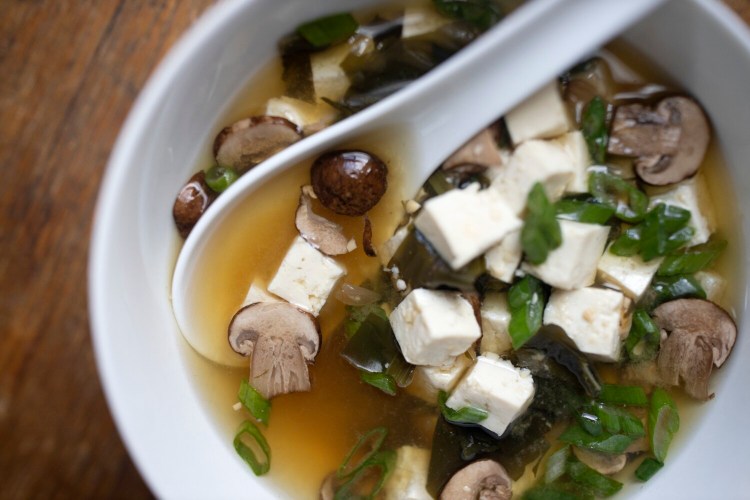Even though living in the Internet age means we have a zettabyte of culinary information at our fingertips, cooks still turn to other cooks for trusted advice. What’s your sure-fire way to release a cake cleanly from a Bundt pan? Is there an easy way to peel a shallot? What’s a good substitution for Thai fish sauce? Can you save an oversalted soup?
One question I regularly get asked is this: What tricks do you use to make the most of an ingredient that is environmentally friendly, say carrots from your local farmers market, but costs a lot more than trucked-in, conventionally raised carrots from the supermarket?
I have a stock answer. I savor it once in all its delicious glory, then I suck the life out of it by turning its byproducts into other ingredients I can use to layer flavor into future dishes. I make compost salts from carrot peels. I throw cheese rinds into simmering sauces. I steam tough Brussels sprouts stalks to make them edible. I make one local chicken really last. And I turn pea pods into stock.
I turn almost any bit and bob from the local vegetable, meat, cheese, fish or legume I buy into a flavorful liquid. The rainbow of whey; bean juice; and vegetable, beef, chicken, duck, fish, lamb, pork, shellfish and veal stocks in my freezer give my soups, rice dishes, pots of whole grains, long braises and quick gravies much more flavor than if I’d used plain water as their foundation. And, heck, I’ve even started turning stock into more stock! But I am merely following age-old culinary traditions where nothing brought into the kitchen goes to waste.

The first, stronger batch of dashi broth is on the left, and the second dashi broth is on the right. Japanese cooks use each a little differently. Brianna Soukup/Staff Photographer
In French culinary tradition, the term for taking cooked bones to make a secondary stock like this is called remouillage (literally, “rewetting” in French). While the full-flavored primary stock can often be enjoyed by sipping it plain with just a pinch of salt, a less flavorful remouillage stock is better for combining in a Dutch oven with a brisket, say, where their mingling for a couple hours does both ingredients good. Cooled remouillage stock can also be poured over fresh bones to make an even meatier primary stock.
Oops! We could not locate your form.
Japanese cooks make ichiban, or first, dashi by brewing dried kelp in water and then adding bonito flakes (dried, shaved tuna) or dried shiitake mushrooms. These omnivore and vegan combinations, respectively, give the dashi such a strong savory flavor that it rarely requires salt or other seasonings. Niban dashi, or the second dashi, is made from kombu and the bonita flakes that were already used to make ichiban dashi. Niban dashi is lighter and less intense, but it still offers an umami punch when it is used to simmer other foods, which, in turn, add their own flavors to the stock.
From West to East, frugal cooks teach us that returning to the stock pot time and time again is the best way to honor the ingredients that show up in our kitchens.
CHRISTINE BURNS RUDALEVIGE is a food writer, recipe developer and tester, and cooking teacher in Brunswick, and the author of “Green Plate Special,” a cookbook from Islandport based on these columns. She can be contacted at cburns1227@gmail.com.
Mostly Maine Dashi Broth and Miso Soup
I say “mostly” in the title of this recipe because when the photographer came to snap the photos of my dashi-making adventure on a snowy day, all I had in my cabinet was bonito flakes from Japan, not dried shiitake mushrooms from Maine. I’ve since made this recipe with dried shiitakes from Oyster Creek Mushroom Co. in Damariscotta, wild Atlantic kombu from Ironbound Island in Winter Harbor, wild Atlantic wakame from Maine Coast Sea vegetables in Hancock, miso from go-en Fermented Foods in Whitefield and tofu from Heiwa Tofu in Rockport; those versions can all be called All-Maine Miso Soup.
Makes 2 quarts
FOR THE ICHIBAN DASHI:
2 quarts water
1 ounce dried kombu
1/2 ounce bonito flakes (about 1/4 cup) or 1 ounce dried shiitake mushrooms (2-3 whole mushrooms or 1/4 cup sliced)
FOR THE MISO SOUP:
6 tablespoons white miso paste
8 ounces firm silken tofu, cut into 1/2-inch cubes
1/2 ounce dried wakame seaweed (1/4 cup), cut or torn into small pieces
4 ounces fresh mushrooms, sliced
4 whole scallions, thinly sliced
To make the ichiban dashi, combine the water and kombu in a medium saucepan. Bring to a bare simmer over medium heat. Remove from the heat and add bonito flakes. Let stand for 30 minutes. Strain through a fine-mesh strainer and reserve the solids to make a second, weaker batch of niban dashi (NOTE: Either dashi can be stored in the refrigerator for up to 1 week).
To make the miso soup, set the ichiban dashi over low heat to keep warm, but do not let it boil. Stir in the miso (NOTE: For a less rustic miso soup, place a fine-mesh strainer in the broth and add the miso paste to the strainer. Use the back of a spoon to press the paste through the strainer into the broth, discard any large grains that don’t pass through).
Add the tofu, wakame and mushrooms, and allow to cook without boiling until ingredients are warm and the wakame has re-hydrated, about 5 minutes.
Divvy up into bowls. Garnish with scallions and serve immediately.
Send questions/comments to the editors.


